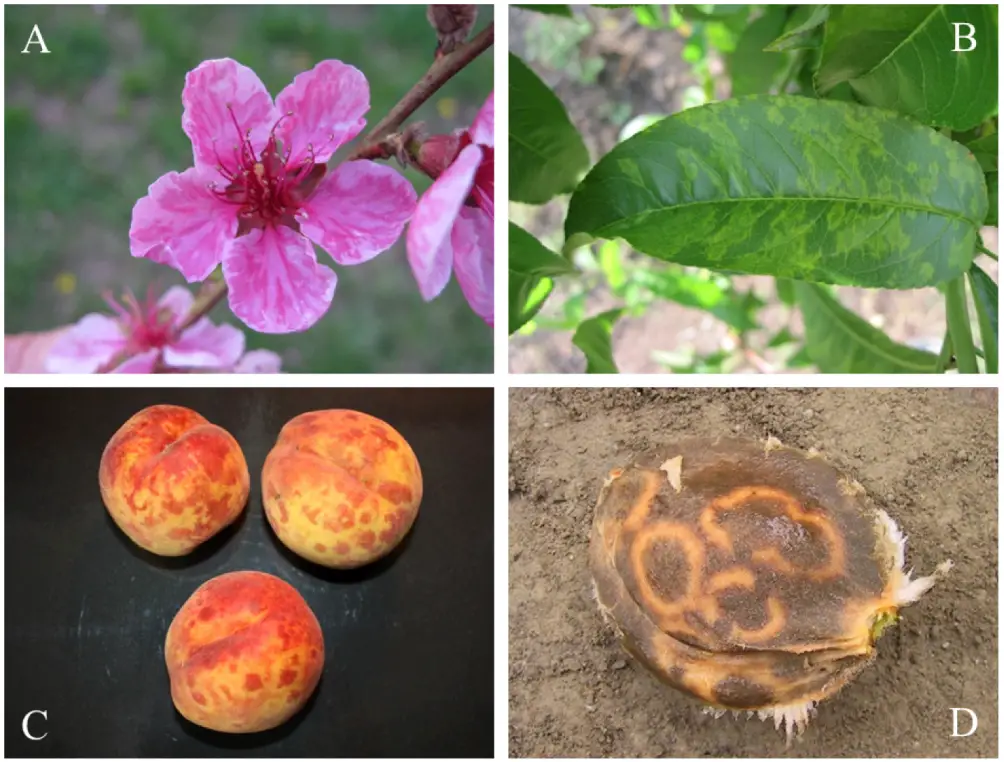Plum pox virus first came about in 1917 in Bulgaria but has since been encountered in many countries, including the UK. This fruit virus can be contained in infected rootstock which you won’t know about when you first plant your fruit tree. It also spreads through aphids from infected trees, with the virus creeping inside the tree itself. The virus multiplies as the years pass causing more and more damage.

Jiri Sochor, Petr Babula, Vojtech Adam, Boris Krska, and Rene Kizek, CC BY 3.0, via Wikimedia Commons
On trees, it can cause discoloured leaves, often with blotches, rings, or lines on them. Fruit colouring abnormalities may also be a symptom of plum pox virus. As well as infecting plum trees, plum pox can also affect peaches and almonds.
Jump To...
Plum Pox Symptoms
Should you suspect plum pox on your fruit tree, look out for the following tell-tale symptoms to be sure. It’s quite a unique virus and isn’t often mistaken for other diseases:
- Discolouration of the leaves will be accompanied by lines, blotches, and ringed patterns.
- Late May/early June is the best time to examine leaves, once they are more developed.
- You might also see some inconsistencies with the fruits themselves but this will vary depending on the variety of your fruit. You may see some sunken rings on your fruit or uneven ripening.
- The flesh around the stone can also be affected so if you discover lines here, chances are there is plum pox present.
Plum Pox Treatment & Control
Plum pox, unfortunately, cannot be effectively treated once a tree has become infected. There are, however, some control measures you can carry out to minimise the risk of the virus from occurring.
Control
Using the following control measures can help to protect your tree and fruit from plum pox virus.
- Encourage aphid predators into your gardens such as birds and hedgehogs.
- Remove any wild hosts that may be within your garden vicinity.
- Spraying aphids with a pesticide will help stop the virus from spreading.
- Regular pruning/checking of your tree will help keep it healthy.
- Buy your rootstock from a reputable company, ensuring it has been certified as free from plum pox virus.
N.B There are no effective pesticides that can be used to treat plum pox virus and in some cases, affected trees need removing as fruit crop will be heavily reduced.
Biology / Lifecycle
Plum pox virus is spread through infected rootstock and budwood so it’s important to purchase yours carefully. Aphids then spread the virus as they move from an infected tree to another, bringing the virus with them. It can become a huge problem in orchards where there are many trees. The disease starts slowly but picks up the pace each year.
Our Plum Pests and Diseases guide has more information on common problems found in UK plum trees.

